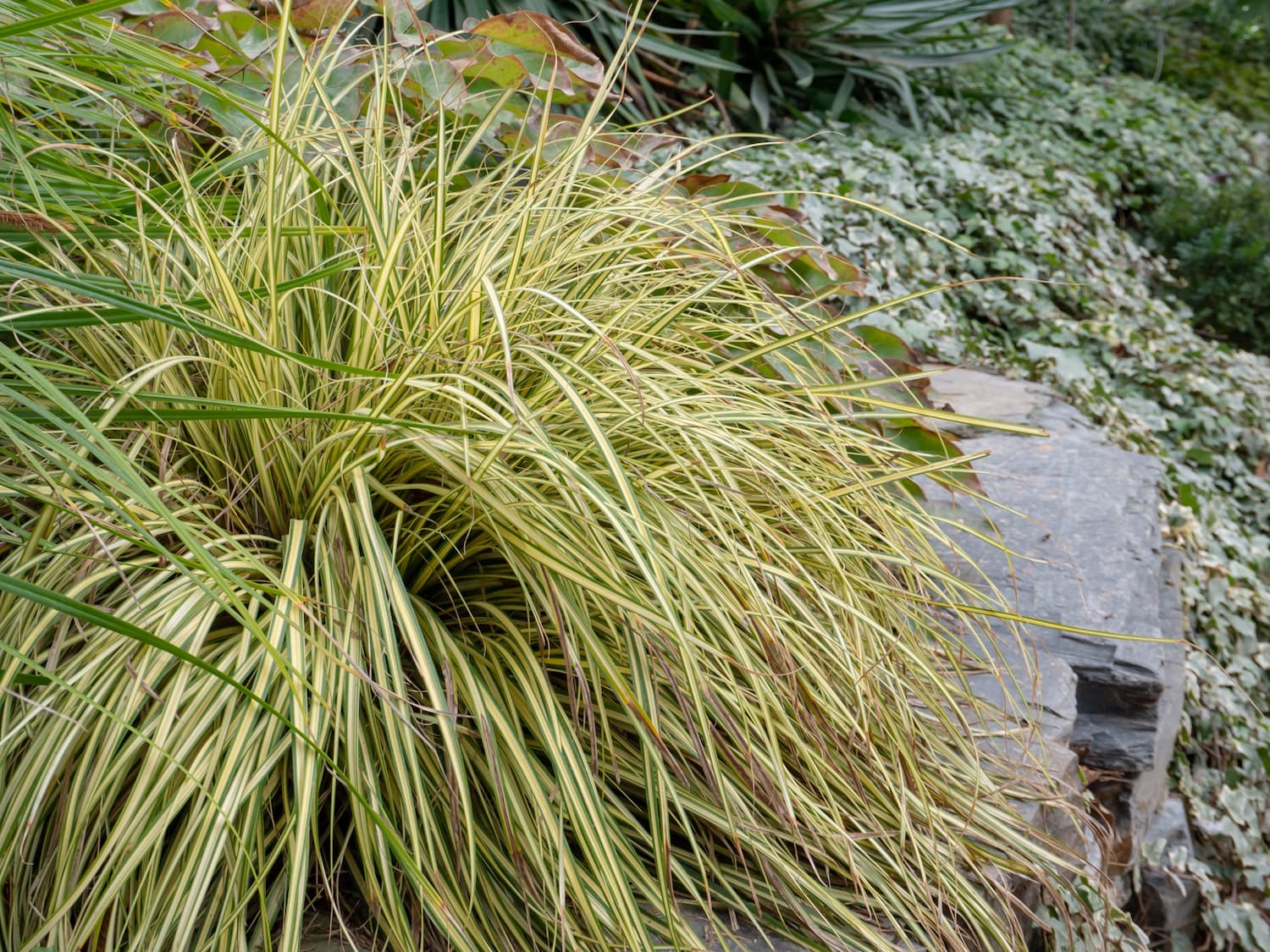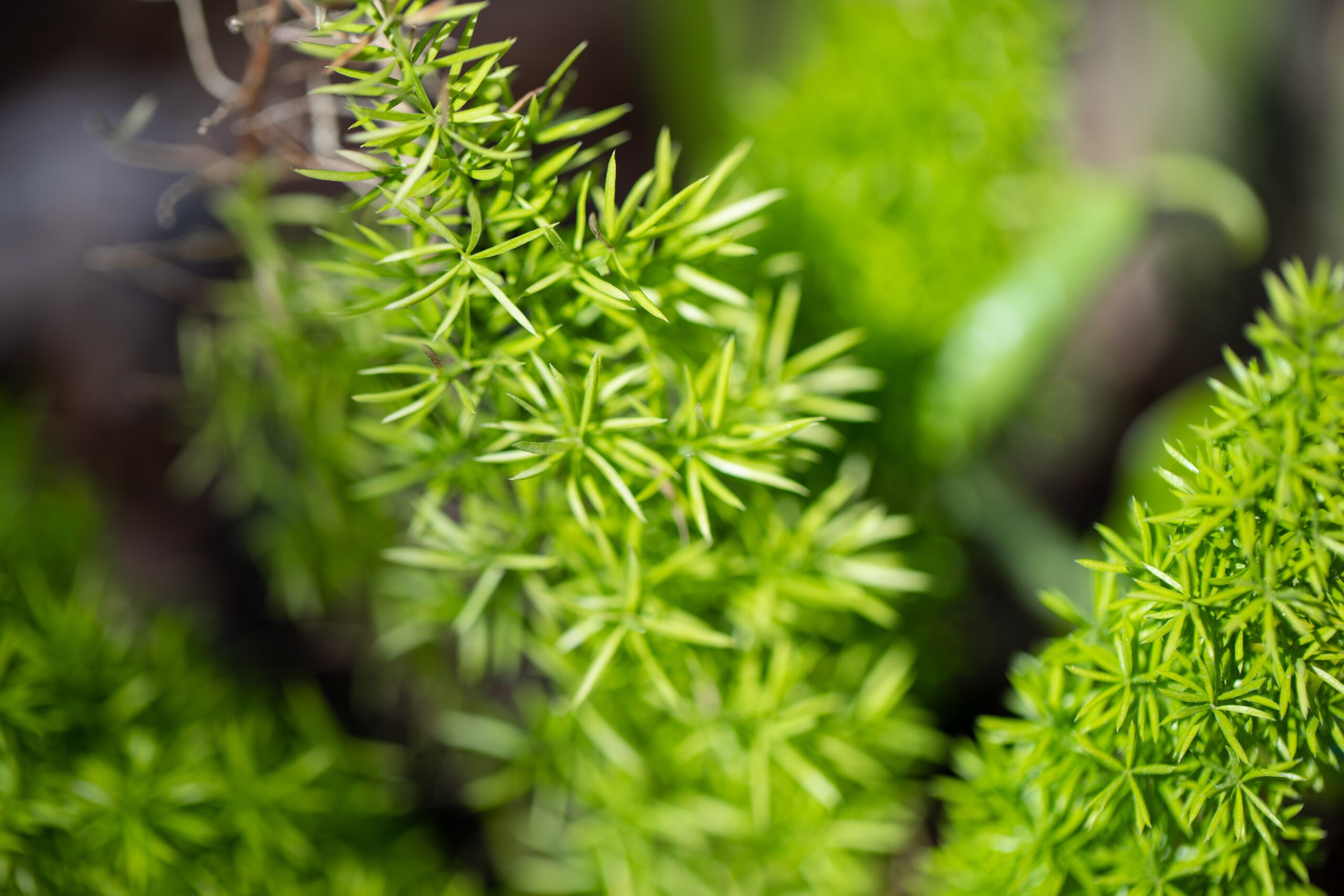In recent years, gardeners have discovered sedges as a tough, evergreen perennial option for many…
How to Grow and Care for Texas Mountain Laurel
The tornado of October 2019 completely devastated North Haven Gardens, yet in the middle of the destruction, the Texas mountain laurel that was long-established in our front flower bed was standing tall and looking great. Any plant that can withstand an F4 tornado certainly deserves a place in the landscape. Let’s look at what makes this Texas native a popular choice for gardeners.
Types of Mountain Laurel
Texas mountain laurels are a slow-growing, medium-sized shrub that is commonly shaped up as a specimen tree. Over the course of several years, it will grow to 10’-12’, though in ideal conditions it can reach to 30’ in 20 years. They are evergreen, with a rich, emerald-green leaf that’s naturally glossy and lustrous. The leaves grow together densely, with a graceful, drooping growth habit that gives the overall plant a lovely shape and makes it a good choice as a screening hedge when planted in a row and grown as a shrub. In spring, Texas mountain laurel is known for its clusters of purple flowers with a unique grape Kool-Aid fragrance. The flowers mature into 3”-4” fuzzy brown bean pods which add color and interest in the fall and winter.
Mountain Laurel Care
Mountain laurels do best in full sun to part shade. The most important factor to remember for successful establishment is soil. Mountain laurels are native to central and south Texas in areas of rocky, well-draining soil, and they must have excellent drainage. These are easy plants to maintain: they are not picky about fertilization, and because they are slow-growing, they require very little pruning.
Texas mountain laurels make a great choice as a foundational plant: an evergreen with year-round interest from the beautiful blooms and decorative seedpods, and one that’s easy to grow. Coming up, we’ll look at how to select, establish, and maintain this tough Texas native in your landscape.
How to Grow Mountain Laurel
This popular Texas native tree/shrub makes an excellent choice as a foundational plant: an evergreen with year-round interest from the beautiful blooms, glossy foliage and decorative seedpods, and one that’s easy to grow. Now let’s look at how to select, establish, and maintain this tough Texas native in your landscape.
Mountain Laural Growing Considerations & Tips
Keep these factors in mind when you’re considering adding a mountain laurel to your landscape: though in ideal conditions, they can reach 30’ tall, but they’re slow growing; in urban landscapes, they generally top out at 10’-12’. They do best in full sun to part shade; too much shade and they will get straggly and the bloom production will decline. And the most important factor to successfully establishing a mountain laurel is good drainage. If you’re planting near a downspout or in a naturally soggy area, choose another plant. If you’re planting in our heavy clay soils, be prepared to heavily amend the soil to improve drainage.
Planting & Maintaining Mountain Laurel
After you’ve purchased your Texas mountain laurel, take time to be sure it’s planted well. First, make a root stimulator solution and while you’re digging the hole, let the root ball soak in this solution. When you dig the hole, it should be 2-3 times as wide and almost as deep as the pot. If you do need to amend the soil, use a mixture of 1/3 native soil (from the hole), 1/3 expanded shale, and 1/3 compost. Take the plant out of the root stimulator and if there are any encircling/girdling roots, use a soil knife to make vertical cuts in the root ball, gently scoring into the roots. Set the plant into the hole; ideally, the top of the root ball should be 2” above the top of the hole. Backfill the hole with the native soil/amended soil mix, then add a 2”-3” layer of hardwood mulch starting 3” away from the trunk and moving out to the drip line. Water slowly and deeply when the top few inches of soil begin to dry out. A soaker hose is an ideal way to water; never rely on in-ground sprinklers to get any tree, shrub or perennial established. In addition, hand water once a month with a root stimulator solution.
Once established, Texas mountain laurels are drought-tolerant and require very little care. Pruning, either to maintain a shrubby shape or to develop a more tree-like form, should be done mid-spring after the bloom season has passed, and in late winter only as needed to remove freeze-damaged wood. Fertilize in fall and spring with a low-level organic fertilizer like Espoma’s TreeTone.
Pest & Disease Control For Mountain Laurels
Bagworms are the only pest that may be found on mountain laurels; at the first sign of worms (often on the back of leaves) or damage to foliage, spray with an organic pest control containing spinosad or wash with insecticidal soap. Now the only thing left to do is enjoy this beautiful addition to your landscape, year-round and for many years.



